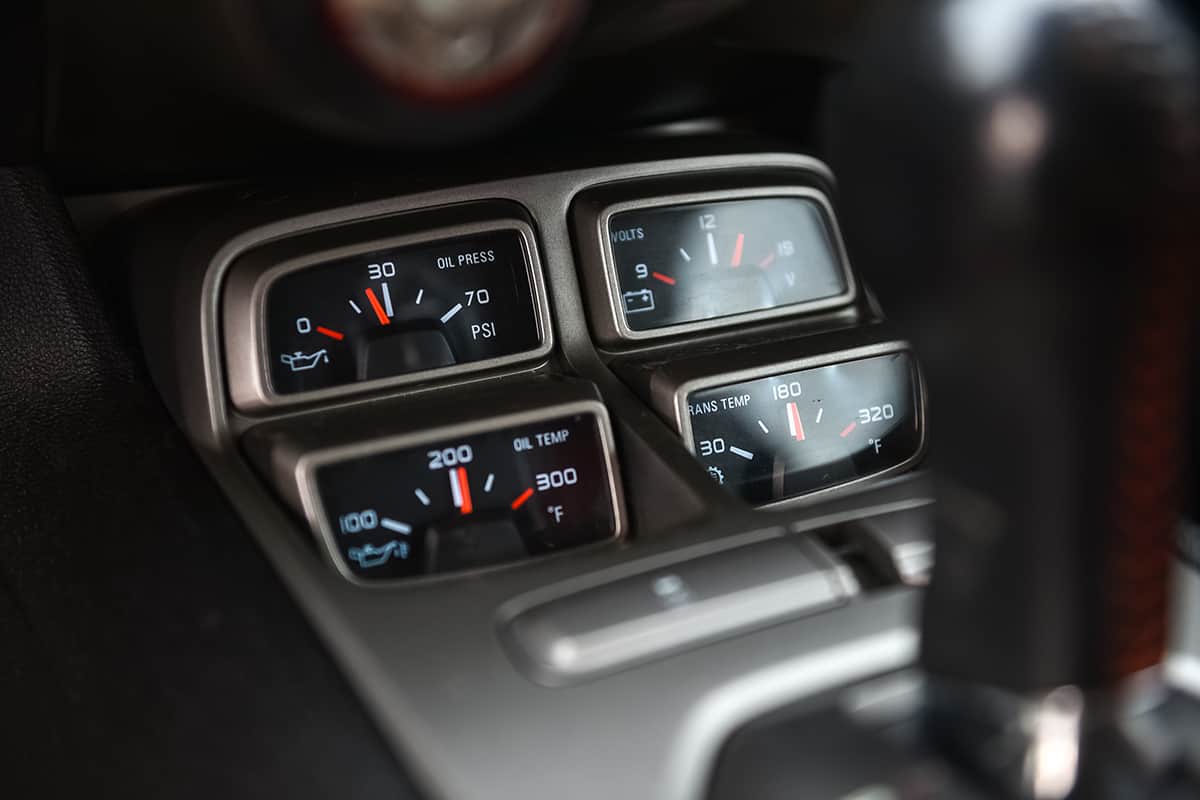A well-functioning transmission is essential to your vehicle’s performance, ensuring smooth gear shifts and delivering power from the engine to the wheels. As a vehicle owner or enthusiast, it’s crucial to grasp the inner workings of the transmission system and recognize its importance in the overall health of your vehicle.
The ideal temperature range for a transmission system is typically between 160-200°F (70-93°C) to ensure optimal performance and prevent overheating. Transmission temperature can vary depending on driving conditions, such as city driving, highway driving, or towing, which may cause the temperature to rise.
In this comprehensive guide, we’ll delve into the factors affecting transmission performance, how to maintain optimal functionality, and tips for identifying potential issues before they escalate.
What is the Transmission System?

The transmission system is an integral part of any vehicle’s powertrain, responsible for transferring power from the engine to the wheels. In simple terms, it’s the mechanism that allows a car to move forward or backward.
A transmission system typically consists of a gearbox, clutch, and various other components that work together to control the speed and torque of the vehicle. There are different types of transmission systems, including manual and automatic transmissions, as well as continuously variable transmissions (CVT).
Why Does Transmission Temperature Matter?
The temperature of a vehicle’s transmission is an important factor to consider for maintaining its overall health and performance. The transmission fluid acts as a lubricant, cooling agent, and hydraulic fluid within the transmission system. If the temperature of the fluid becomes too high or too low, it can lead to a variety of issues, such as decreased efficiency, increased wear and tear, and even damage to the transmission.
Monitoring and maintaining the correct transmission temperature is essential for ensuring that the transmission fluid is working effectively and that the transmission system is functioning as it should.
Average Transmission Temperatures
The ideal transmission temperature range can vary depending on the make and model of the vehicle but typically falls between 160°F and 200°F. However, it’s important to note that the actual temperature of the transmission fluid can fluctuate depending on various driving conditions.
Heavy towing or hauling loads can cause the transmission temperature to increase significantly, with average temperatures ranging from 200°F to 230°F. In extreme cases, such as racing or off-roading, the transmission temperature can climb even higher.
Factors Affecting Transmission Temperature
The transmission temperature of a vehicle can be affected by a variety of factors, including ambient temperature, vehicle weight and load, driving conditions and habits, and transmission fluid type and level.
1. Ambient temperature
Ambient temperature can play a significant role in transmission temperature, with higher temperatures outside resulting in higher transmission temperatures. Similarly, colder temperatures can cause the transmission to take longer to warm up and reach optimal operating temperature.
2. Vehicle weight and load
Car weight and load can also impact transmission temperature, with heavier loads or towing putting more stress on the transmission system and causing the transmission temperature to rise.
3. Driving conditions and habits
Driving conditions and habits can also affect transmission temperature, with stop-and-go traffic or driving in hot weather causing the transmission temperature to increase. Aggressive driving, such as frequent acceleration and braking, can also cause the transmission temperature to rise.
4. Transmission fluid type and level
The type and level of transmission fluid can also play a role in transmission temperature. Using the wrong type of transmission fluid or driving with low fluid levels can cause the transmission to overheat and lead to damage.
Consequences of High Transmission Temperatures

Allowing your transmission to run at high temperatures can have serious consequences for the lifespan and health of your vehicle’s transmission system. Here are some of the potential outcomes of consistently running a transmission at high temperatures:
1. Reduced transmission lifespan
Prolonged exposure to high temperatures in a transmission system can cause the transmission fluid to deteriorate rapidly, compromising its effectiveness as a lubricant and coolant. As the fluid breaks down, it loses its ability to protect the transmission components from friction, leading to increased wear and tear on crucial parts like gears, clutches, and seals.
This excessive wear can cause the transmission to malfunction, ultimately reducing its overall lifespan. Additionally, a poorly functioning transmission can negatively impact the vehicle’s performance, fuel efficiency, and smoothness of gear shifts, making it crucial to address high-temperature issues promptly.
2. Increased wear on components
High transmission temperatures can cause various components of the transmission system, such as seals and gaskets, to wear out more quickly. This can lead to leaks, which in turn can cause damage to other parts of the transmission.
3. Potential for transmission failure
In extreme cases, running a transmission at high temperatures can cause the transmission to fail completely. This can be a costly and time-consuming repair, and may require the transmission to be replaced entirely.
Tips for Maintaining Optimal Transmission Temperature
Here are some tips for keeping your transmission temperature within the ideal range:
- Regularly check and change transmission fluid: Checking your transmission fluid regularly and changing it as needed can help keep your transmission running smoothly and prevent overheating. Be sure to use the correct type and level of fluid for your vehicle.
- Install a transmission cooler: If you frequently tow heavy loads or live in a hot climate, installing a transmission cooler can help keep your transmission temperature under control. A cooler can help dissipate heat from the transmission fluid and prevent it from overheating.
- Adopt proper driving habits: Avoiding aggressive driving, such as sudden acceleration and hard braking, can help keep your transmission temperature within the ideal range. Additionally, avoiding heavy loads and reducing your speed when driving in hot weather can also help prevent overheating.
- Keep your vehicle well-maintained: Regular maintenance of your vehicle, including the transmission system, can help prevent issues with transmission temperature. Be sure to follow the recommended maintenance schedule for your vehicle, including checking and changing the transmission fluid, and addressing any issues promptly.
FAQs
1. What is the ideal transmission temperature?
The ideal transmission temperature range is typically between 160-200°F (70-93°C). Maintaining temperatures within this range ensures optimal performance, and smooth gear shifts, and prevents excessive wear on the transmission components.
Make sure to monitor your vehicle’s transmission temperature, especially during extreme driving conditions or when towing heavy loads, to avoid potential damage or transmission failure.
2. How can I tell if my transmission is overheating?
Signs of an overheating transmission may include slipping gears, a burning smell, transmission fluid leaks, or delayed and erratic shifting. Your vehicle’s dashboard may also display a warning light indicating transmission temperature issues. Regularly monitoring your transmission temperature using a gauge or an OBD-II scanner can help you detect potential overheating before it causes severe damage.
3. How often should I check my transmission fluid?
It’s recommended to check your transmission fluid at least once a month or every 1,000 miles, whichever comes first. Additionally, refer to your vehicle’s owner’s manual for specific recommendations regarding transmission fluid checks and changes.
Regularly checking the transmission fluid level and quality ensures your transmission system remains well-lubricated and operates at optimal temperatures.
4. Can I drive my vehicle if the transmission temperature is too high?
Driving your vehicle with an excessively high transmission temperature can lead to severe damage or even transmission failure. If you notice symptoms of an overheating transmission, it’s best to stop driving, allow the transmission to cool down, and address the underlying issue.
This may include checking the transmission fluid level, installing a transmission cooler, or seeking professional assistance from a mechanic or transmission specialist.






